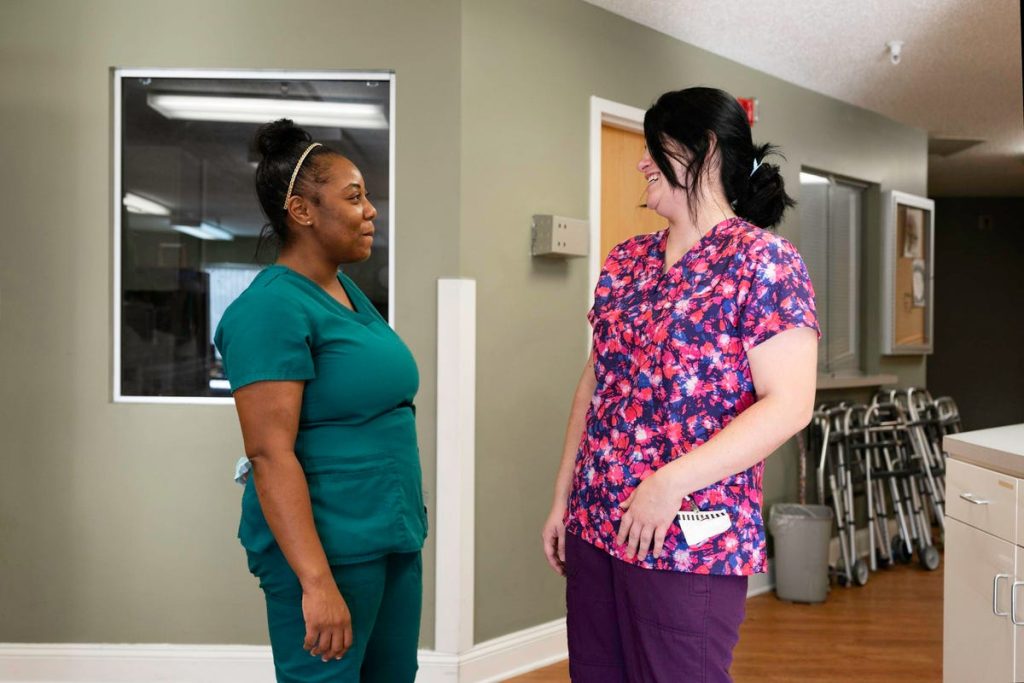Nursing homes have been pressing for more money from the state and federal governments, by far their biggest payers. Now they are close to getting it, but the extra payments may come with costly new obligations, especially related to staffing.
The federal government is about to increase Medicare payments for skilled nursing care and, at the same time, states are considering a new round of hikes in their Medicaid payments for long-term nursing home care. The price: Tough new requirements for facilities to hire more staff and work harder to keep care workers.
More Money, More Rules
The federal government has proposed increasing Medicare payments to skilled nursing facilities by a relatively generous 3.7%, or $1.2 billion, starting next September. But at the same time, the Centers for Medicare and Medicaid Services (CMS) also proposed tying a share of those payments to the rate of staff turnover in facilities. CMS already requires nursing homes to report this information but now it wants to begin penalizing facilities with high turnover rates, starting in 2026.
Recent studies show that close to 100 % of nursing facility staff may leave over the course of a year, which can result in higher rates of infection and lower quality of care for residents.
But the biggest change may come later this spring, when the agency is expected to set minimum staffing requirements for nursing facilities. The nursing home industry has been furiously lobbying to water down those rules and CMS has delayed them for several months. The details will be extremely important for facilities, residents, and patients. But the new standards will come in some form.
States Already Acting
Last year, New York State required nursing homes to provide a minimum of 3.5 hours of care per resident per day. That law also requires facilities to spend at least 70 % of their revenue on direct care and at least 40% on staffing. However, facilities can request that any penalties be waived if they can prove they are unable to find sufficient staff.
About a half-dozen other states also impose minimum staffing of at least 3.5 hours per resident per day.
At the same time, states have been responding to pressure from nursing home operators and direct care worker unions to raise Medicaid payment rates.
During the pandemic, the federal government gave facilities billions of dollars in aid. Many states increased their payment rates substantially and several made those hikes permanent. But the federal payments to nursing facilities during the height of Covid-19 have ended and operators are looking for steady annual increases from state Medicaid departments, as well as CMS.
The New York State legislature is considering at least a 5% boost. Many other states, from Montana to New Jersey, are mulling Medicaid nursing home payment increases this year.
Uncertain Margins
The federal Medicare program pays for most skilled nursing care in facilities, such as physical therapy for patients discharged from a hospital. State Medicaid programs (with help from a federal contribution) pay for long-term care in nursing facilities for those residents with limited resources and a high need for personal care.
Nursing home officials claim daily costs often exceed Medicaid payments. However, it is hard to know exactly how much profit operators make since many have found ways to shift revenue to related-party businesses that provide ancillary services such as laundry and pharmacy. That may lower reported returns for the nursing home itself but still generate substantial profits for the operators.
A congressional advisory committee called the Medicaid and CHIP Payment and Access Commission (MACPAC), urged CMS to require states to more frequently analyze and update their Medicaid nursing home payments so they better track increases in the cost of care.
MACPAC estimated that in 2019 (before the pandemic) median base payments covered about 86 % of reported nursing home long-stay costs. But there was huge variation: 15% of facilities said Medicaid payments covered less than 70% of their costs while 19 % said they received more than 100%.
With higher wages and other expenses, along with a steep decline in occupancy (now partially recovered), it is likely that more facilities are underwater today. But it is very hard to know since accurate public reporting of an operator’s total returns is limited.
The New Bargain
Whatever the bottom line, the federal government seems to be on the verge of a new bargain with nursing home operators: It will give them more money but in return expect them to pass on at least some of those extra payments to front-line staff.
Another consequence of this move: It likely will raise wages for home care workers since agencies will be competing with higher-paying nursing homes for the same limited pool of aides. Good news for the workers but another challenge for those families who pay for care out-of-pocket and who will face rising costs for services that already are unaffordable for many.
The challenge for states and CMS now is to find the right balance between what they pay and how much of that support goes to patient and resident care.
Read the full article here
















